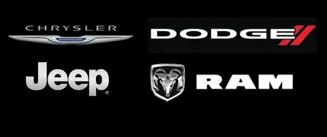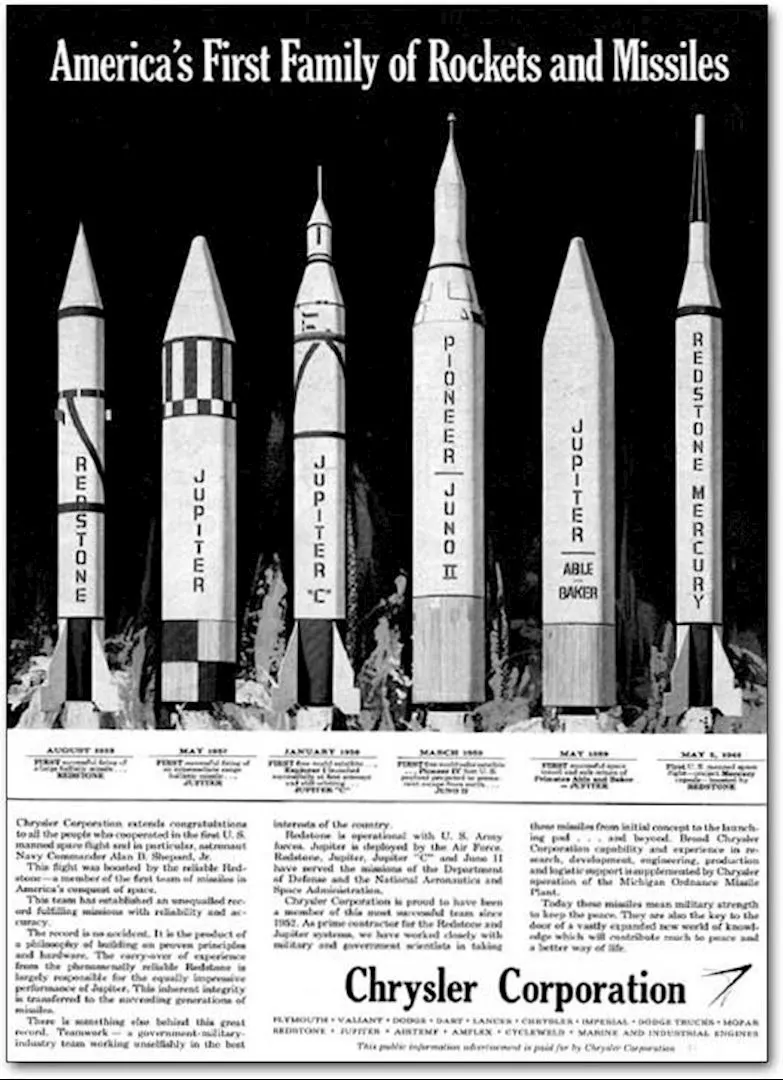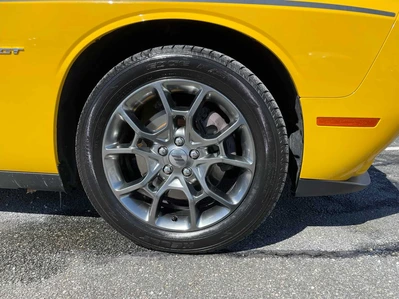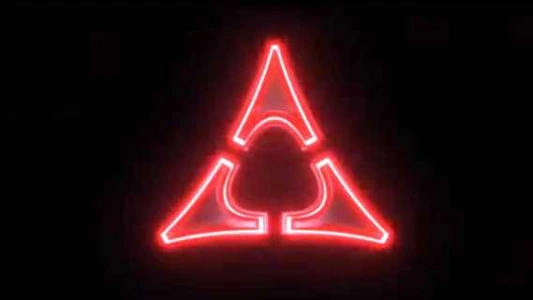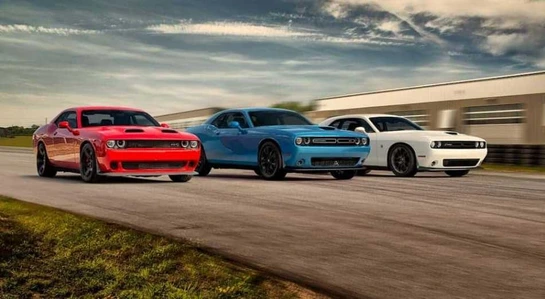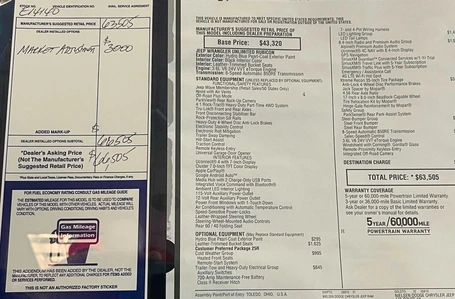So the other day I was watching James Pumphrey from #DonutMedia talk about the history of the Dodge Daytona and Plymouth Superbird (https://www.youtube.com/watch?v=svS_loWDV0c). While watching the video, he gave some interesting nuggets of Mopar history that made my jaw drop. While discussing the history of these two Mopar icons, he made mention of the Chrysler Missile and Space Divisions.
Are you serious? Chrysler made missiles? Hell yeah! The part that caught my attention starts at after 2:20 in the video where James states: "Dodge took their winged beast to the Chelsea Proving Grounds for some testing. But when the drivers got to the track, Dodge engineers gave them specific instructions not to go over 190 miles per hour. Here's why they couldn't do that: Ford had spy planes circling the track. This is wierd... right? Chrysler had a missile division, and Ford had spy planes! What a time to be alive!!!"
So how did this come to be? I had to do my research! After a quick google search, I found myself at www.Allpar.com. Curtis Redgap wrote two really good articles describing Chrysler's history in the missile industry. Here are my summarized findings: (siting information found below)
After World War II, Chrysler was contracted between 1953-1954 to design and build the Redstone Missile, which would be utilized by the US Military and later by NASA. Initially, the plan was for Chrysler to utilize facility space within the US Navy, but that quickly got nixed when they found they needed over double the space. The first 12 missiles were assembled at the Redstone Ballistic Missile Complex, Chrysler then moved production to their complex in Warren, Michigan. Chrysler was quickly commended for their excellent quality standards, as all missile testings were without failure and functioned as intended. Their Redstone Missiles were given the slogans of "Old Reliable" and "Army Workhorse." Chrysler continued to successfully complete each Army contract their were provided, and that lead into Chrysler recieving a contract to work on the Jupiter Project.
The Army commissioned Chrysler to build the Jupiter rocket in 1956, a modified version of the Redstone Missile that would be specifically designed for long-range applications. The Jupiter C rocket was initially developed by Wernher von Braun, who was initially told to not persue the program, but he refused to listen, and continued the program and was able to continue recieving funding for it by disguising it as a civilian satalite program. This became a fortunate mistake ultimately for the United States, as in the late 50s, it became apparent that the US missile technology was trailing behind the Soviet Union's missile technology. Luckily for Braun, the German Nazi scientists being utilized by the USSR had immediately contacted him when they began being returned to Germany in 1952, giving him much needed intel on the Russian technology. This allowed him to gain the upper hand for the United States.
With Braun's new-found intelligence, and as well as his current knowledge of missile and rocket technology, when the United States Goverment learned how far they were behind the USSR, President Eisenhower was quite disturbed. Braun however, told the government if given the green light, he could successfully get US missiles and satalites into earth's orbit before the Russians. Although deterred by the disguise of a civilian program, the President authorized the production of the Jupiter C rockets as Chrysler was officially given the contract for the Jupiter rockets in 1956 and the first two tests were successful. While the Jupiter rockets were being built, Eisenhower was still backing an alternate program through the Army called the Vanguard program. Ultimately riddled with problems, the Vanguard program literally blew up on a test launch in 1957.
In 1958, NASA officially took over the Jupiter program, with the President signing the National Aeronautics and Space Administration (NASA) officially on July 29th. Shortly thereafter, the 50th Jupiter missile was launched, despite a programming error by NASA, the Chrysler built missile performed as designed. The successful launch lead to Chrysler being contracted to build multiple Redstone Jupiter missiles. The Jupiter Missile program, now under the Explorer program, had replaced the Vanguard program. To no surprise, shortly after the Redstone Jupiter missiles were found to be a success, Chrysler was awarded another contract to build Jupiter C missile boosters for the Army Ballistic Missile Agency. These missiles were not for satellite purposes, but rather military weaponry.
Considering the Army-based long range missile systems failed, and the NASA run systems being produced with Chrysler were successful, the Army saw this as a great opportunity to reallocate their missile developement funding elsewhere, leaving the long-range missile programs to NASA. At this point, roughly 75 Redstone rockets had successfully been lauched, which lead Chrysler being contracted to build 8 of these rockets for the Mercury Project. To keep the names in line with previous projects, Braun renamed the Mercury project Saturn, as the previous missile was named Jupiter.
Chrysler went on to build the Saturn I, the Saturn IB, and assisted the Douglas Aircraft Company with the Saturn V rocket. As JFK now took over as President of the United States, the USA had recaptured the lead in missile development. Furthermore, Chrysler's Saturn based rocket boosters were a leading contribution to the Apollo missions in the 1960s and 1970s, successfully producing fifteen of the Stage One sections of the Saturn V rockets. Now moving forward towards shuttle exploration, Chrysler proposed a shuttle design for NASA, but it was not the design chosen, officially ending Chrysler's involvement in the NASA and missile programs.
#Mopar #MoparInSpace #YeahItsAHemi #MoparOrNoCar #MoparMike #SpaceExploration #Mercury #Jupiter #Saturn #NASA #Chrysler #Space #WithUsOrBehindUs
Sources:
Pumphrey, James. Superbird + Daytona - Everything You Need To Know I Up To Speed. Donut Media, 23 Nov. 2017, https://www.youtube.com/watch?v=svS_loWDV0c Accessed 31 July 2019.
Redgap, Curtis. The Chrysler Corporation Missile Division and the Redstone missiles. Allpar.com, 2008 https://www.allpar.com/history/military/missiles.html Accessed 31 July 2019.
Redgap, Curtis. Fly Chrysler To The Moon: The Saturn Rockets. Allpar.com, 2008 https://www.allpar.com/history/military/moon.html Accessed 31 July 2019.

